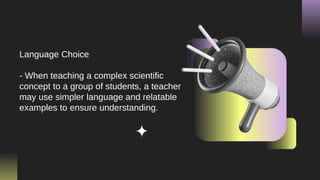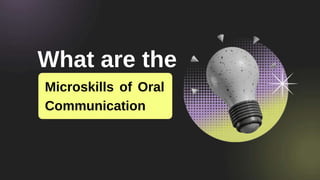This document discusses several topics related to speaking skills and oral communication. It begins by explaining the importance of speaking practice in language learning classrooms. It then defines different types of spoken language such as conversational, formal, academic, informative, persuasive, and narrative language. The document also discusses microskills of oral communication like voice modulation, articulation, body language and eye contact. It notes some challenges to speaking like pronunciation, grammar, fluency, vocabulary, listening skills and cultural awareness. Finally, it provides references for further research on topics like task-based language teaching, discourse analysis, and oral communication skills.

































